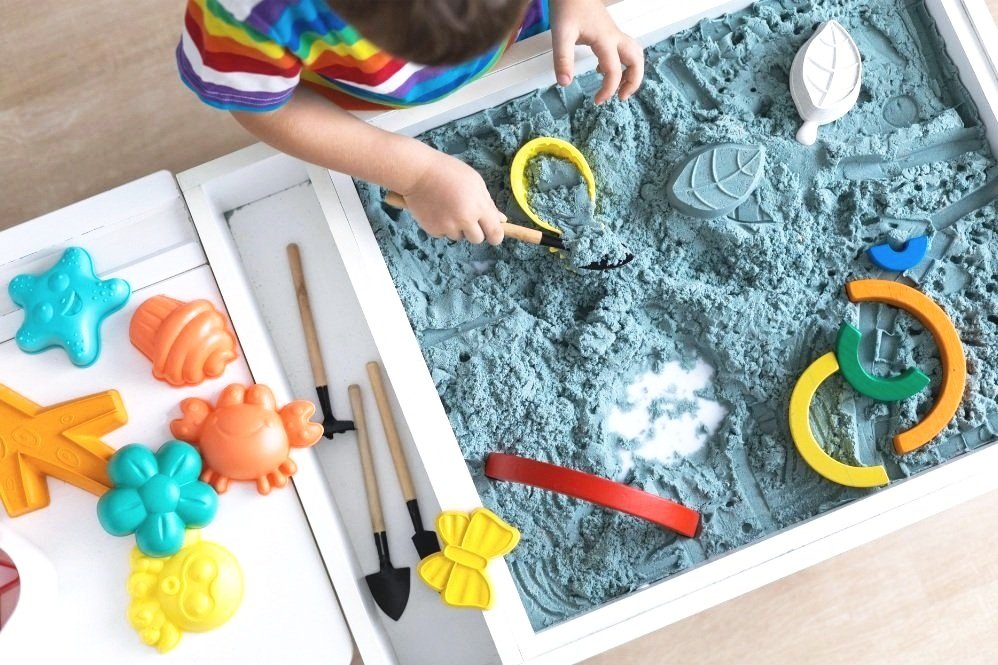10 Hands-On Therapeutic Activities for Kids
Hands-on learning, also called experiential learning, is learning by doing!
From a therapeutic perspective, interventions that utilize hand-on learning techniques can lead to increased interest, motivation, engagement, and progress! Here we have collected 10 of our favorite hands-on therapeutic activities to help kids develop emotional literacy, build self-esteem, practice coping skills, manage behavior, and recognize values.
Build-It Prompts
This therapeutic activity is a great way to roll the dice and find constructive inspiration!
After each turn, try these talking points: What did you build? Why did you choose to build this? Would you change anything about your creation? If you could take a magic wand and make this creation real, would you do it? Why or why not?
Find a printable version of this resource and others in our Therapeutic Activities tab!
2. Chemical Reactions Experiment
Through scientific play, children can experiment with cause and effect and learn to better understand the world around them.
We love to use the volcano to talk about feeling eruptions!
“Baking Soda + Vinegar” is kind of like “Tired + Frustrated”—they both lead to an eruption! What other feelings blend together to make something new?
Pair this activity with our Emotions Equations worksheet.
Find this resource and other recommend toys and games for play therapy HERE.
3. Conversation Cube
Print, cut, and fold this template to create an interactive way to talk to kids. This cube has open-ended question prompts to encourage kids to explore their emotions, values, and circumstances.
Find a printable version of this resource and others in our Conversation Starters tab!
4. Wooden Birthday Cake
Blowing out candles is a playful way for children to practice intentional breaths that they can employ when feeling dysregulated or upset. Take mindfulness practice one step further and encourage kids to think of something they are grateful for, or “a wish come true,” as they blow out each candle.
Pair this activity with our Breathing Techniques infographic.
Find this resource and other recommend toys and games for play therapy HERE.
5. Paper Fortune Teller: Mindfulness Practice
This foldable fortune teller is an interactive way to prompt mindfulness practice with kids. Engage in body stretches, deep breathing, and sensory exploration while meditating on kindness, gratitude, and peace.
Encourage kids to practice on their own or with their friends and family!
Find a printable version of this resource and others in our Mindfulness Practice tab!
6. Kinetic Sand + Toys
The unique texture of kinetic sand provides a calming sensory experience that creates a soothing and grounding effect. As kids manipulate the sand with their hands, they engage in a practice that encourages mindfulness and focus within the therapeutic space.
Use small toys like these flowers to create a gratitude garden or to talk about the value of individual differences.
Find this resource and other recommend toys and games for play therapy HERE.
7. Oobleck Science Activity Guide
Oobleck is a non-Newtonian fluid that is kind of like us—its behavior is variable depending on stress! This hands-on sensorial experiment can help kids understand that stress (anxiety, frustration, disappointment, failure, anger) can change our behavior.
Read on to learn how to make Oobleck and how to talk to kids about transformative nature.
8. Beading Kit
Beading encourages patience, creativity, and focus as kids select, organize, and assemble pieces. It can also serve as a meditative outlet by providing children with a calming and immersive experience.
We love to use bead patterns to talk about emotional and behavioral patterns!
Find this resource and other recommend toys and games for play therapy HERE.
9. What Would Puppy Do?
This puppy-in-a-box is not only soft and cute, it is also an excellent tool to help kids practice problem-solving and perspective-taking. We like to use the puppy as an approachable proxy for a child’s personal struggles. This builds empathy for self and others!
Give the child personally-relevant scenario prompts and ask them to show and explain how the puppy would behave and feel in those situations. Here are a few examples:
If a child is struggling with peer issues: Puppy loves playing at the dog-park, but sometimes he plays too rough and then the other dogs don’t want to be near him. Can you show me how Puppy might feel and what he might do? What is something helpful you could say to Puppy?
If a child is struggling with separation anxiety: Puppy’s owners have to go to work, so they bring her to doggy-daycare. Can you show me how Puppy might feel and what she might do? How could you comfort Puppy?
If the child seems receptive, you could personalize the scenario by asking them, have you ever felt this way? What would have helped you?
Find this resource and other recommend toys and games for play therapy HERE.
10. Doll House
Dollhouses provide a symbolic space where children can examine their thoughts, emotions, and experiences. Through the manipulation of figures and settings, children can externalize and make sense of their internal world. This type of play facilitates communication when verbal expression is challenging or limited.
Try these play prompts: Who does the kid go to when they get hurt? Where does the dad spend the most time? Who yells the most in this family? Who is the funniest in this family? Where does the kid hide when they feel afraid? Who cooks the food? Which room is the most peaceful?
Find this resource and other recommend toys and games for play therapy HERE.
Explore our full range of therapeutic activities HERE.
RELATED BLOG POSTS:











